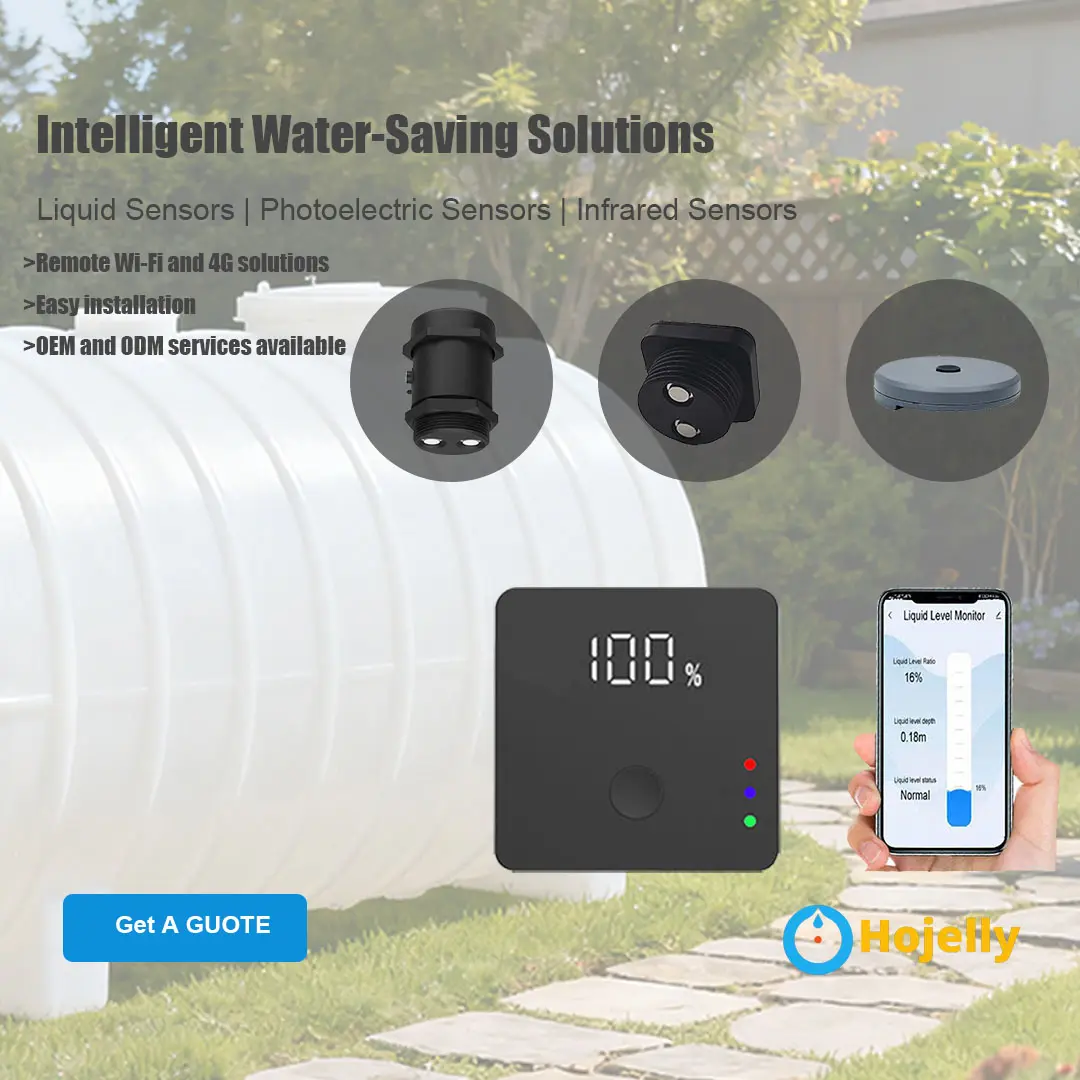water tank level monitoring system
1. Let's break down how these concepts connect to create a Smart Water Tank Level Monitoring System.
2. The Big Picture: From Simple Tank to Smart Water Solution
3. A Smart Water Tank Level Monitoring System transforms a passive storage unit into an intelligent part of your water management. It solves the fundamental problem of not knowing how much water you have without manually checking.

1. Why You Need This System (The "Problem")
• Prevent Running Out of Water: Avoid the inconvenience and potential damage of an empty tank.
• Avoid Overflows: Prevent water wastage and potential property damage from an overflowing tank.
• Automate Pump Control: Automatically turn a refill pump on/off based on actual water levels.
• Remote Monitoring: Check your water level from anywhere, using your smartphone or computer.
• Data & Insights: Track water usage patterns over time to understand consumption and detect leaks (e.g., water level dropping unexpectedly fast).
2. How a Smart Water Tank Level Monitoring System Works
These systems typically consist of three main parts:
a) The Sensor (The "Eyes" in the Tank)
This is the device that physically measures the water level. Common types include:
• Ultrasonic Sensor: Mounted at the top of the tank, it sends sound waves down to the water surface and measures the echo time to calculate distance/level. It's non-contact and very popular.
• Pressure Sensor/Transducer: Placed at the bottom of the tank, it measures the pressure (and thus the height) of the water column above it.
• Float Switches: Simple mechanical switches that trigger at specific pre-set levels (e.g., "Low" and "High").
• Submersible Level Sensors: Use hydrostatic pressure to determine the water level.
b) The Controller & Connectivity (The "Brains" and "Voice")
This component takes the reading from the sensor and sends it to you.
• Microcontroller: A small computer like an Arduino or ESP32 that reads the sensor data.
• Communication Module: This is what makes it "smart." It can use:
◦ Wi-Fi: To send data to your home router and the cloud.
◦ Cellular (4G/5G): Ideal for remote locations without Wi-Fi.
◦ LoRaWAN/LoRa: Long-range, low-power wireless for wide areas like farms.
• Power Source: This can be a power adapter, batteries, or even solar panels for remote installations.
c) The User Interface (The "Dashboard" for You)
This is how you see the information.
• Mobile App: Receive push notifications and see the current level on your phone.
• Web Dashboard: View your tank's status, history, and charts from any browser.
• SMS Alerts: Simple text message alerts when the level is low or high (common with cellular systems).
• Local Display: A small screen on the device itself showing the current level.
3. Key Features of a Smart System
When looking for or building a solution, here are the features to expect:
1. Real-Time Level Display: A visual representation (like a bar graph or percentage) of the current water level.
2. Automated Alerts: Customizable notifications for low level, high level, pump failure, or system errors.
3. Historical Data & Graphs: View usage over hours, days, or months to analyze trends.
4. Pump Control: Ability to automatically or manually control a water pump via a relay.
5. Multi-Tank Support: Monitor several tanks from a single dashboard.
6. Leak Detection: Algorithms that warn you if water is being lost unusually fast.
4. Practical Applications & Use Cases
• Residential Homes: For overhead tanks and underground sumps.
• Agriculture & Farming: Monitoring irrigation tanks and reservoirs over large areas.
• Commercial & Industrial: Managing water for manufacturing, cooling towers, or fire suppression systems.
• Remote Communities & Off-Grid Living: Critical for managing precious water resources in cabins or remote stations.
• Hospitality: Ensuring continuous water supply for hotels and resorts.
5. Getting Started: DIY vs. Ready-Made Solutions
Option
Pros
Cons
Best For
DIY (e.g., with ESP32, Ultrasonic Sensor)
Low cost, highly customizable, great learning experience.
Requires technical skill, time, and effort to build and maintain.
Hobbyists, students, tech-savvy individuals.
Commercial Off-the-Shelf System
Plug-and-play, reliable, professional support, often includes warranties.
Higher initial cost, less customizable.
Homeowners, farmers, businesses who need a reliable, set-and-forget solution.
6. Conclusion
7. Linking your keywords together:8. A Smart Water Tank Level Monitoring System is a core water solution that brings intelligence and automation to a standard water tank